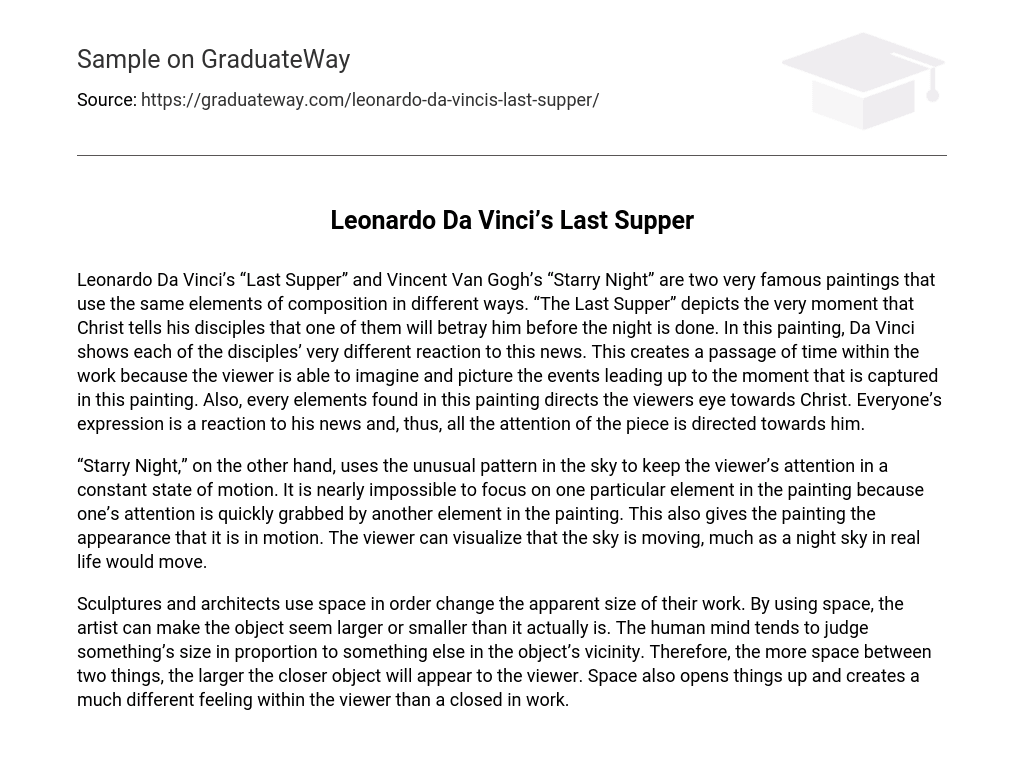Leonardo Da Vinci’s “Last Supper” and Vincent Van Gogh’s “Starry Night” are two very famous paintings that use the same elements of composition in different ways. “The Last Supper” depicts the very moment that Christ tells his disciples that one of them will betray him before the night is done. In this painting, Da Vinci shows each of the disciples’ very different reaction to this news. This creates a passage of time within the work because the viewer is able to imagine and picture the events leading up to the moment that is captured in this painting. Also, every elements found in this painting directs the viewers eye towards Christ. Everyone’s expression is a reaction to his news and, thus, all the attention of the piece is directed towards him.
“Starry Night,” on the other hand, uses the unusual pattern in the sky to keep the viewer’s attention in a constant state of motion. It is nearly impossible to focus on one particular element in the painting because one’s attention is quickly grabbed by another element in the painting. This also gives the painting the appearance that it is in motion. The viewer can visualize that the sky is moving, much as a night sky in real life would move.
Sculptures and architects use space in order change the apparent size of their work. By using space, the artist can make the object seem larger or smaller than it actually is. The human mind tends to judge something’s size in proportion to something else in the object’s vicinity. Therefore, the more space between two things, the larger the closer object will appear to the viewer. Space also opens things up and creates a much different feeling within the viewer than a closed in work.





